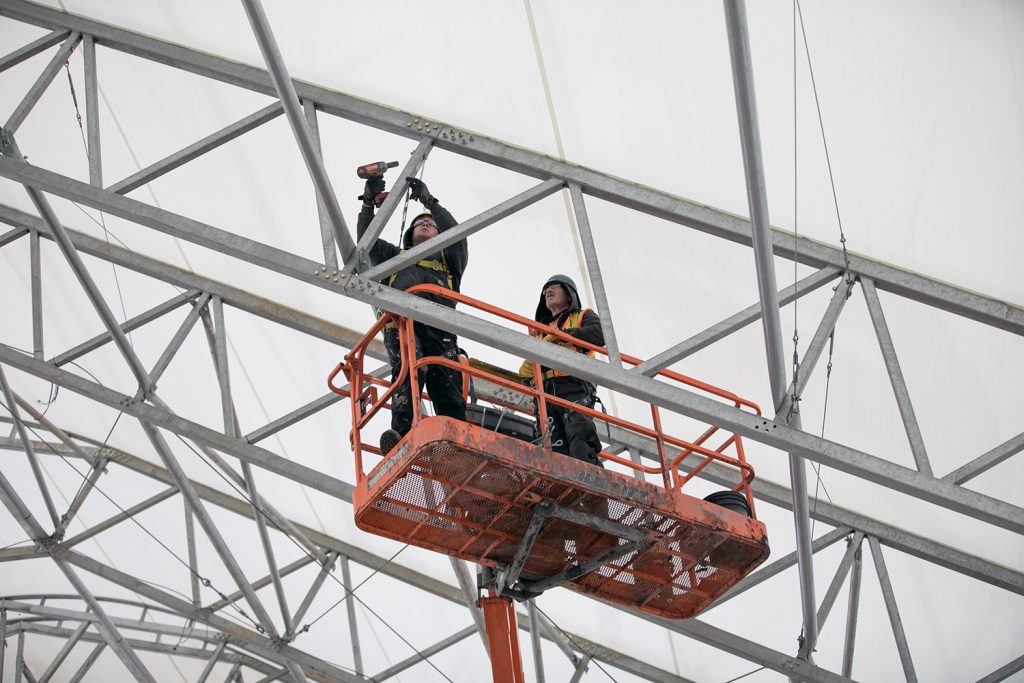Site C construction continues, but how many apprentices will work on the project remains uncertain.
When B.C. Premier John Horgan announced on Dec. 11 that his government would go forward with the Site C project in northeastern British Columbia, he singled out the need to improve apprenticeship levels and the number of First Nation workers on the project.
While Site C apprenticeship numbers are currently low — the latest employment breakdown shows 11 apprentices employed at the project in November —
Progressive Contractors Association of Canada British Columbia regional director Rieghardt van Enter said that’s partially due to the current needs of the project’s initial stage of construction.
“The bulk of work now is heavy equipment operators (HEO), but Industry Training Authority completion rates for that program were low,” van Enter said. “That makes the numbers look bad.”
Heavy equipment operation also isn’t conducive to apprenticeships, van Enter said.
“HEO is a skill, but it’s tough to have an apprentice and trainer in one-man vehicles such as dozers or a bucket,” he said.
“It’s a work in progress, but it’s a challenge for roadbuilders, civil engineers and others.”
BC Building Trades executive director Tom Sigurdson questioned whether HEO was a significant contributor to overall low levels of apprenticeship.
“There were lots of labourers up there. How many were apprentices?” he asked.
Sigurdson conceded, however, that heavy equipment operators had a low completion rate.
“There’s a low completion rate because excavators are included. An excavator is the money maker for a company, and you want the most skilled person on it, but once they retire, noone can operate it,” Sigurdson said.
Another factor, van Enter said, is that many workers are challenging the Red Seal certification because they already have the required amount of work experience, but “challenges don’t show up as apprentices.”
“Peace River Hydro Partners has nothing against apprentices,” van Enter said. “It’s one thing to sign people up, but we want them to sign up for long-term careers, not short term political moves.”
Sigurdson pointed out the previous Liberal government’s target of 25 per cent apprenticeships on Site C was “aspirational” and at any rate didn’t happen. He warned if the same scenario played out again, it could have adverse effects for the province’s future labour pool.
“If we don’t control these numbers, we’ll have a skills shortage in a decade,” Sigurdson said.
The number of apprentices will increase as the project moves to a new construction phase and needs shift in response, van Enter said.
“We’ll see a jump in apprentices as work continues and on trades where apprenticeship is seen as a solid career path,” he added.
With the instalment of turbines and generators and heavy mechanical trades working, Sigurdson was also hopeful apprenticeship numbers would improve as the project moves forward.
“Will it achieve 25 per cent? I don’t know. A lot of heavy civil will already be done. But let’s take it trade by trade,” he said.
BC Hydro stated in the initial stages of the project it had invested approximately $1.5 million in skills and trades training programs, including $1 million to the Northern Lights College Foundation for student bursaries, $184,000 to Northern Opportunities for a school district career counsellor to aid student transition into trades and career training, and $175,000 to the organization over five years for its pre-apprenticeship program.
BC Hydro also put $100,000 towards trades training under the North East Native Advancing Society’s North East Aboriginal Trades Training program.
According to the November employment statistics, there were 1,681 total workers on the Site C project. Of the workers, 1,353 were from British Columbia and 374 were onsite from the Peace River Regional District.











Recent Comments
comments for this post are closed